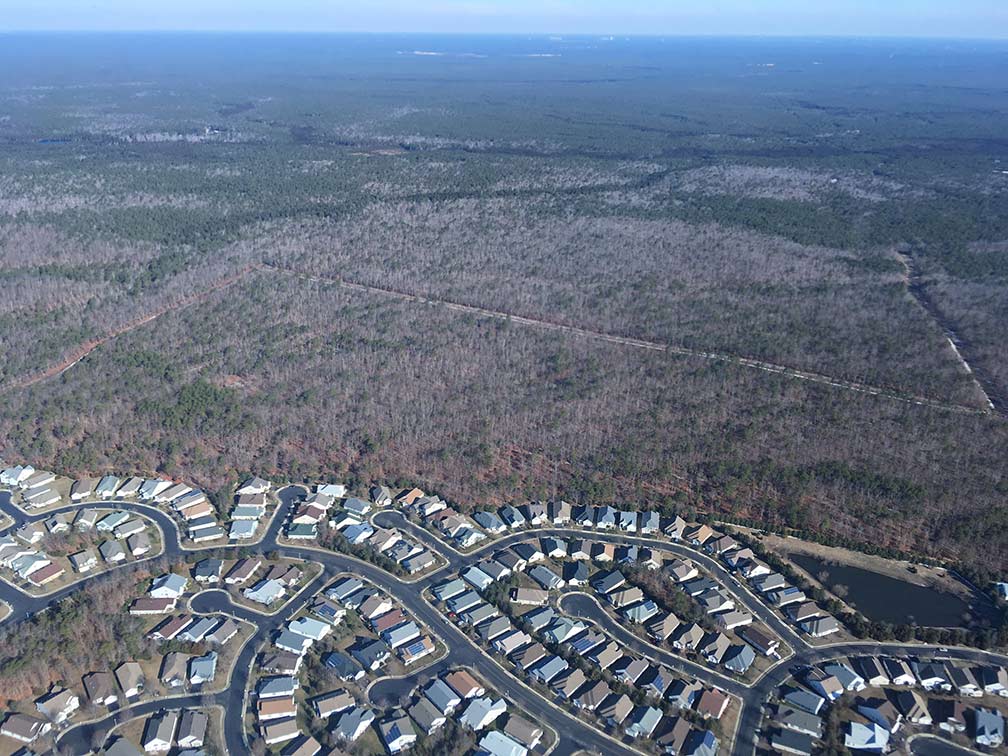
What We Do
Working with communities across the country, Community Planning Assistance for Wildfire (CPAW) provides communities with land use planning solutions, communications assistance, and customized research to better understand and manage wildfire-prone areas and reduce risks. Established in 2015 by Headwaters Economics, CPAW is funded by the U.S. Forest Service and private foundations. Services and recommendations offered by CPAW’s interdisciplinary team are provided at no cost to the community. Read more about CPAW.
Land Use Planning
Land use planning can reduce wildfire risk by helping communities in fire-prone areas grow and develop with wildfire in mind.
The CPAW team reviews community plans and codes—such as the Comprehensive Plan and Land Use Development Code—and compiles recommendations as to how they may be integrated with other documents such as a Community Wildfire Protection Plan or Hazard Mitigation Plan. The goal is to reduce regulatory conflicts, address development, and ensure wildfire is considered alongside other community planning priorities.
CPAW communities have applied a variety of land use planning strategies to reduce risk, such as:
- Prioritizing wildfire resilience in community plans;
- Using wildfire-specific building codes in areas of higher hazard;
- Enforcing slope setbacks to restrict development in high-risk areas;
- Requiring adequate road and water supplies for wildfire response and evacuation; and
- Implementing landscaping ordinances that require vegetation maintenance.
CPAW works closely with local officials to ensure its recommendations meet the unique needs of the community. Implementation of recommendations is at the discretion of the local jurisdiction.
Communications
Compelling communication and outreach is essential in community work. To be effective, materials must be factual, easy to understand, and beautiful. The CPAW team works with local officials to develop customized informational materials such as:
- Public outreach handouts
- Infographics and data visualizations
- Meeting and training materials
- Best practices reports
- Technical reports
- Presentations
The CPAW team can also recommend communication strategies for interactive presentations and meetings that will engage audiences and promote understanding and action.
Explore CPAW resources.
Research & Science
An important element of the CPAW program is to grow the larger body of knowledge supporting land use planning and wildfire mitigation in wildfire-prone areas. Through our work with communities, we highlight tools, share methods, and focus on technical topics such as development standards, fire behavior, landscape regulations, and fire risk modeling. At the request of communities, CPAW team members with Headwaters Economics conduct original research on a wide variety of topics and disseminate findings in peer-reviewed publications, reports, and articles, as well as professional conferences. To present our research, we use unique online interactives and data visualization tools.
Research examples include:
- Report on Building a Wildfire-Resistant Home: Codes and Costs
- Report on the Full Community Costs of Wildfire
- Data visualization of structures destroyed by wildfire, searchable by state
- Interactive map of communities threatened by wildfire
- Case studies on Land Use Planning to Reduce Wildfire Risk from five urban areas
- Wildfire and Vulnerable Populations Tool for Austin, TX
- Analysis of new Montana homes in areas of high wildfire hazard
- Summary of Montana Planning Tools to reduce wildfire risk
